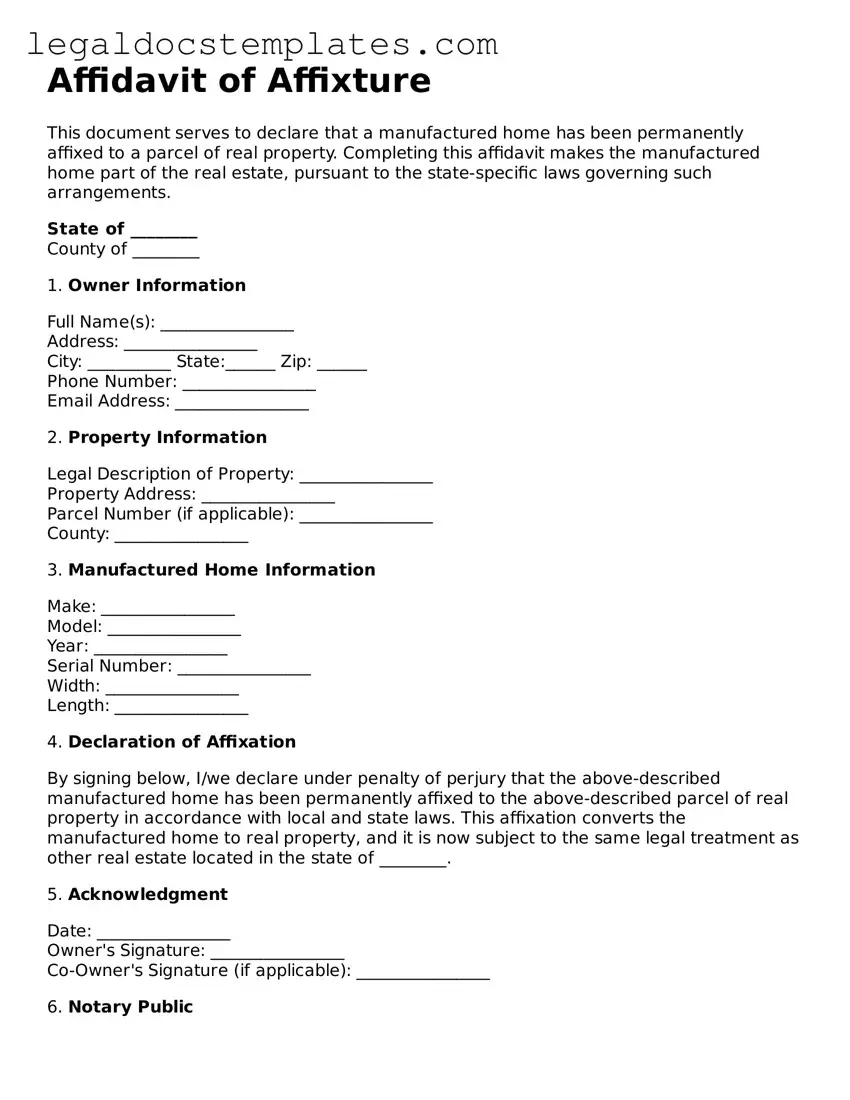Affidavit of Affixture
This document serves to declare that a manufactured home has been permanently affixed to a parcel of real property. Completing this affidavit makes the manufactured home part of the real estate, pursuant to the state-specific laws governing such arrangements.
State of ________
County of ________
1. Owner Information
Full Name(s): ________________
Address: ________________
City: __________ State:______ Zip: ______
Phone Number: ________________
Email Address: ________________
2. Property Information
Legal Description of Property: ________________
Property Address: ________________
Parcel Number (if applicable): ________________
County: ________________
3. Manufactured Home Information
Make: ________________
Model: ________________
Year: ________________
Serial Number: ________________
Width: ________________
Length: ________________
4. Declaration of Affixation
By signing below, I/we declare under penalty of perjury that the above-described manufactured home has been permanently affixed to the above-described parcel of real property in accordance with local and state laws. This affixation converts the manufactured home to real property, and it is now subject to the same legal treatment as other real estate located in the state of ________.
5. Acknowledgment
Date: ________________
Owner's Signature: ________________
Co-Owner's Signature (if applicable): ________________
6. Notary Public
State of ________
County of ________
Subscribed and sworn to (or affirmed) before me this ____ day of ____________, 20__, by ________________ (name of signer) and ________________ (name of co-signer, if any).
Notary Signature: ________________
Printed Name: ________________
Commission Number: ________________
My commission expires: ________________
